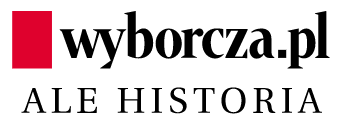 W 1947 r. tysiące Polaków ochoczo fałszowały wybory. Sowieci tylko nadzorowali
W 1947 r. tysiące Polaków ochoczo fałszowały wybory. Sowieci tylko nadzorowali
Grzegorz Motyka
 Tablice agitacyjne przed referendum 30 czerwca 1946 r. (Fot. domena publiczna)
Tablice agitacyjne przed referendum 30 czerwca 1946 r. (Fot. domena publiczna)
W niektórych okręgach wymienione zostały całe urny, w innych wpisano dane na podpisanych in blanco duplikatach protokołów.
Grzegorz Motyka – historyk, politolog, pracownik Instytutu Studiów Politycznych PAN
Zgodnie z ustaleniami przyjętymi w Jałcie w Polsce miały się odbyć wolne, tajne i demokratyczne wybory do Sejmu. Komuniści mieli obowiązek je przeprowadzić, ale od początku nie zamierzali zdawać się na „przypadkowy” osąd ludu.
Zdając sobie sprawę z nikłego poparcia dla Polskiej Partii Robotniczej, postanowiono najpierw 30 czerwca 1946 r. przeprowadzić referendum. Pozwalało ono odsunąć o pół roku termin wyborów do Sejmu, a jednocześnie poznać rozkład sympatii społecznych. Pytania w nim postawione – dotyczyły zniesienia Senatu, trwałości granic na Odrze i Nysie Łużyckiej oraz akceptacji efektów reformy rolnej – były tak dobrane, aby odpowiedź „tak” każdemu wydawała się oczywista. PPR wezwała więc do głosowania „trzy razy Tak”, co zmusiło opozycyjne Polskie Stronnictwo Ludowe Stanisława Mikołajczyka do optowania za odpowiedzią „Nie” w sprawie Senatu.
Choć do akcji referendalnej rzucono duże siły wojska, bezpieczeństwa i milicji, to komuniści nie byli pewni wyniku. Dlatego do Warszawy przybyła grupa fałszerzy z MGB, która miała podretuszować protokoły komisji wyborczych. Gdy spływały one z całego kraju, przekazywano je do obróbki ekipie MGB. Sowieci podrobili prawie 6 tys. protokołów i około 40 tys. podpisów członków komisji wyborczych, zwiększając o 50-80 proc. liczbę odpowiedzi na „tak” na kluczowe pytanie będące przedmiotem sporu z PSL. Poprawiano także wyniki odpowiedzi na pozostałe pytania. Dzięki temu oficjalne dane mówiły o przytłaczającym zwycięstwie PPR, choć faktycznie sukces odniósł PSL. Co ciekawe, komuniści poznali też prawdziwe wyniki referendum i z nich… również byli zadowoleni. Poparło ich bowiem 20-25 proc. głosujących. Było to zbyt mało, aby wygrać w uczciwy sposób głosowanie do Sejmu, ale na tyle dużo, by móc mówić o uzyskaniu przez władze pewnej społecznej akceptacji.
„Zwycięstwo” w referendum zapowiadało, jak będą wyglądały „wolne” wybory do Sejmu. Jesienią 1946 r. rozpoczęła się kampania wyborcza. Odpowiedni wynik wyborczy miało zapewnić 56 tys. żołnierzy Wojska Polskiego, którzy podzieleni na małe grupy jeździli po kraju, agitując do głosowania za Blokiem Demokratycznym (faktycznie zdominowanym przez PPR). W jednym tylko województwie lubelskim wojsko odwiedziło 2937 wsi i rozkolportowało w nich 575 755 wydawnictw. Żołnierze zorganizowali 2795 wieców z udziałem 239 015 osób, ponadto pracą indywidualną objęli 96 972 wyborców. Argumentacja wojska była tak przekonywająca, że 20 kół PSL postanowiło się rozwiązać – wystąpiło z nich 547 członków tej partii.
Tuż przed wyborami w Warszawie ponownie stawiła się ekipa MGB, ale jej rola została ograniczona do udzielania porad technicznych polskim komunistom. Wybory do Sejmu odbyły się 19 stycznia 1947 r. nadzwyczaj „sprawnie”: w niektórych okręgach dokonano wymiany urn wyborczych, w innych wpisywano odpowiednie dane na podpisanych niewypełnionych duplikatach protokołów. Podane oficjalne wyniki mówiły, że na listę Bloku Demokratycznego oddało swoje głosy ponad 80 proc. wyborców, a PSL Mikołajczyka otrzymał poparcie jakoby niewiele ponad 10 proc. wyborców. W rzeczywistości to stronnictwo chłopskie był zwycięzcą: pomimo potężnej fali terroru otrzymało poparcie co najmniej 40 proc. Polaków. Sukces ten jednak został zwyczajnie skradziony zarówno PSL-owi, jak i całemu społeczeństwu.
Komuniści triumfowali. Kiedy po referendum Mikołajczyk na posiedzeniu rządu zaczął mówić o fałszerstwach, Władysław Gomułka przerwał mu butnie: „Możesz poskarżyć się Churchillowi”.
Wybory 1947 r. sfałszowano pod sowieckim nadzorem, jednak bezpośrednimi wykonawcami tej operacji były tysiące Polaków. Uwierzywszy w komunistyczną utopię, ochoczo fałszowali wybór współobywateli, zapewne z przekonaniem, że robią to dla ich dobra. Może się mylę, ale wydaje mi się, że po 1989 r. polskiemu zaangażowaniu w wyborcze oszustwo nie poświęcono zbyt wiele uwagi. Tymczasem unikanie uczciwego rozliczenia tego fragmentu historii ułatwia zadanie wszystkim tym, którzy chcieliby dopuścić się podobnego fałszerstwa. Oczywiście, tak jak w 1947 r., wyłącznie dla „dobra Polski oraz Polaków”.
Zawartość publikowanych artykułów i materiałów nie reprezentuje poglądów ani opinii Reunion’68,
ani też webmastera Blogu Reunion’68, chyba ze jest to wyraźnie zaznaczone.
Twoje uwagi, linki, własne artykuły lub wiadomości prześlij na adres:
webmaster@reunion68.com



